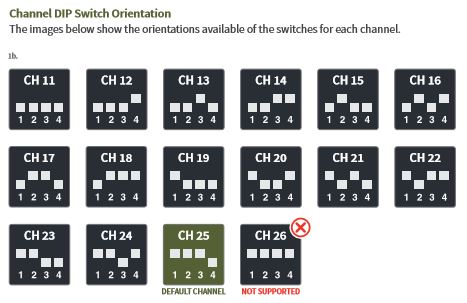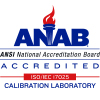There are various reasons why a wireless data logger may not appear in the MadgeTech 4 software through the RFC1000 wireless network, or experience communication issues.
To ensure that the data logger is within range of the RFC1000 wireless network for troubleshooting purposes, the data logger should be in the same room as the computer running the MadgeTech 4 software. It can be re-deployed the the location where data needs to be monitored, after successfully reconnecting the logger to MadgeTech 4.
It’s important make sure all available wireless data loggers are visible. In the Connected devices panel, ensure that the checkbox is empty next to Only show claimed wireless devices. Using the serial number on the back of the data logger, try to locate the data logger in the list of available devices.
Troubleshooting Index
- RFC1000 Wireless Transceiver
- Wireless Data Loggers
- Data Logger Channel Configuration
- Wireless Network Signal Strength, Interference, and Communication Issues
…
RFC1000 Wireless Transceiver
If the USB drivers are properly installed and recognized by the computer, they will appear in the MadgeTech 4 software under File → Options → About as the USB Driver Version: 3.2.0.0. If an RFC1000 is connected to the computer, its red LED should activate and should be listed under File → Options → Communication in the Detected interfaces section.
For first time installations of the MadgeTech 4 software and RFC1000 wireless network, please visit our support article on how to install the USB drivers.
…
Wireless Data Loggers
Prior generations of wireless data loggers have a wireless toggle switch labeled ‘0’ for OFF and ‘1’ for ON. This includes the Therm•A•lert series and any original RFOT models preceding serial number R03411, acquired before 5/30/2019. Please ensure the wireless switch is in position ‘1’ (ON).
The latest generation of RFOT data loggers have a wireless mode that is continuously enabled except when it is plugged into a computer via USB cable. Before handling a circuit board, it is important to discharge any static electricity that could damage the circuitry by touching a grounded metal object. The RFOT circuit board should be handled its edges whenever possible, avoiding contact with the red wireless component at the end of the circuit board.
RF2000A model data loggers have a wireless button that can be pressed to display the wireless channel, and the ON or OFF status of the wireless mode. Pressing the wireless button down for 5 seconds will toggle the status of the wireless mode. If the wireless mode is OFF upon arrival, toggling the wireless mode to ON may cause the data logger to appear on the RFC1000 wireless network. If it does not appear in the software after a few minutes, the wireless must be toggled OFF to change the wireless channel. If an RF2000A model data logger’s LCD screen does not respond when pressing the buttons on its face, it may be time to install a new 9V battery.
If the data logger was previously communicating through the wireless network but suddenly disappeared, it could be the result of a depleted battery, wireless interference, the RFC1000 may have disconnected at the computer, or an RFC1000 between between the computer and the data logger may have been unplugged. RFOT data loggers do not have displays and the battery must be tested with a multimeter or voltmeter. When tested, the RFOT battery should provide a nominal 3.6V.
…
Data Logger Channel Configuration
Data Loggers with Direct USB Connections
After connecting the data logger via USB port to the computer, the data logger should appear in Connected devices. To change the wireless channel settings, select the data logger and click the Properties button in the device tab, or in the right-click context menu.
In the Properties menu, select Wireless from the list on the left. On the right side, there will be a Wireless Channel setting that can be changed through the drop-down menu. If other wireless data loggers are connected, this menu can also be used to determine the wireless channel the network is currently using. Select the desired channel from the drop-down menu, and click Apply.
MadgeTech 4 will take a moment write the wireless channel setting to the data logger. Once this is complete, the status of the data logger will change to Stopped, and the data logger can be unplugged from the computer.
An RFOT will automatically turn its wireless mode on when unplugged from the computer. For RF2000A model data loggers, press the Wireless button for 5 seconds to turn the wireless ON, and the wireless mode will be displayed on its screen.
Within a few minutes, if the wireless channel was correctly configured, the data logger should appear in the MadgeTech 4 software under Connected devices. If the data logger’s text is gray, use the Claim button in the device tab, or in the right-click context menu, to claim control of the data logger. Once the data logger is claimed on the network, it can be used as a normal data logger.
…
Prior Generations with DIP Switches
Prior generations of wireless data loggers relied on physical dip switches, such as the Therm•A•lert and original RFOT models preceding serial number R03411, acquired before 5/30/2019.
By referencing the DIP switch position on other wireless data loggers connected to the network, or by referencing the position of the DIP switches in the RFC1000, the data logger can be configured to the correct wireless channel.
Please toggle the wireless switch to ‘0’ (OFF) before changing the wireless DIP switches, and back to ‘1’ (ON) after setting the desired wireless channel.

…
Wireless Network Signal Strength, Interference, and Communication Issues
Thick material like concrete, metal walls, insulation, or metal objects between RFC1000 and wireless data loggers could also contribute to wireless interference by blocking, reflecting, or absorbing the wireless signal. Additional RFC1000 can be used to circumnavigate these barriers, or existing RFC1000 can be moved to improve the signal strength.
When data loggers show strong signal strength but fail to start or lose communication, it could be the result of wireless interference. Other nearby wireless devices that use WiFi or Bluetooth could cause interference, as well as the WiFi network itself. For more information on WiFi interference, please see our RFC1000 and WiFi Interference support article.
If you continue to have wireless communication issues, for additional troubleshooting, please contact [email protected] or call Technical Support directly at 603-746-8202.






